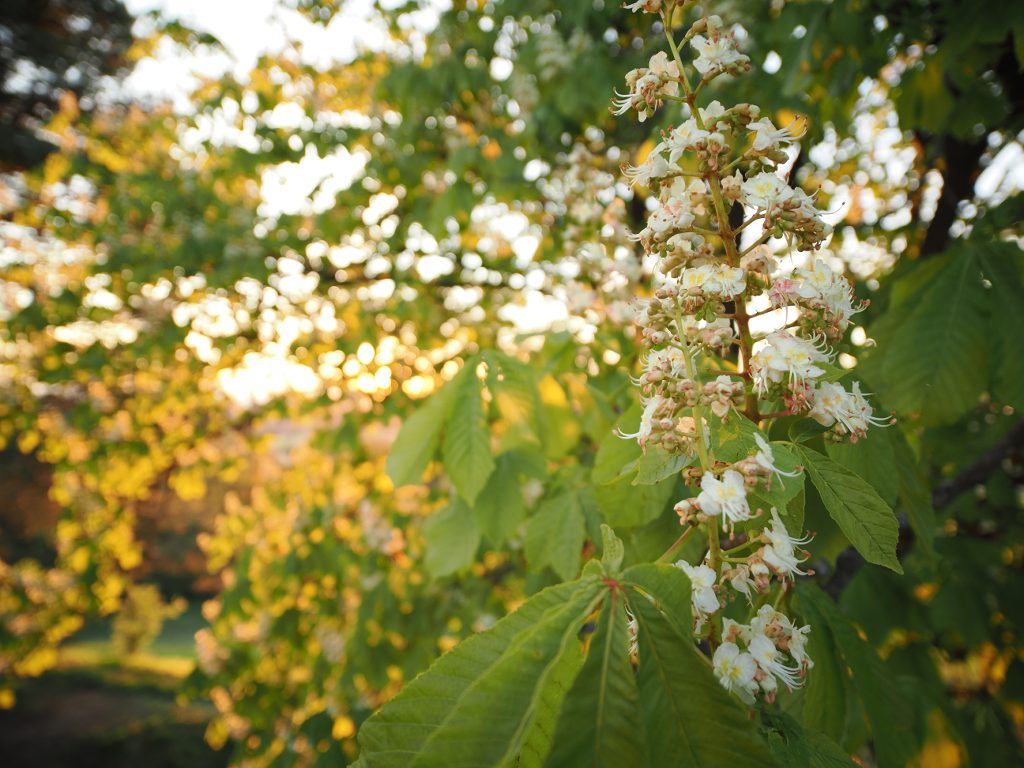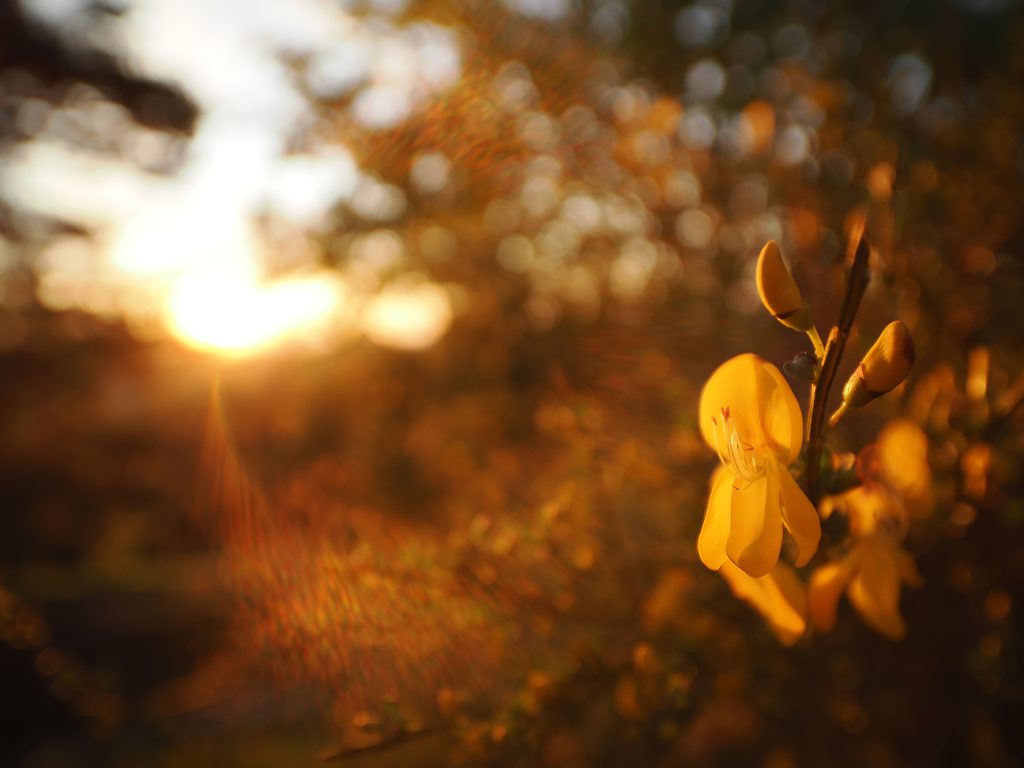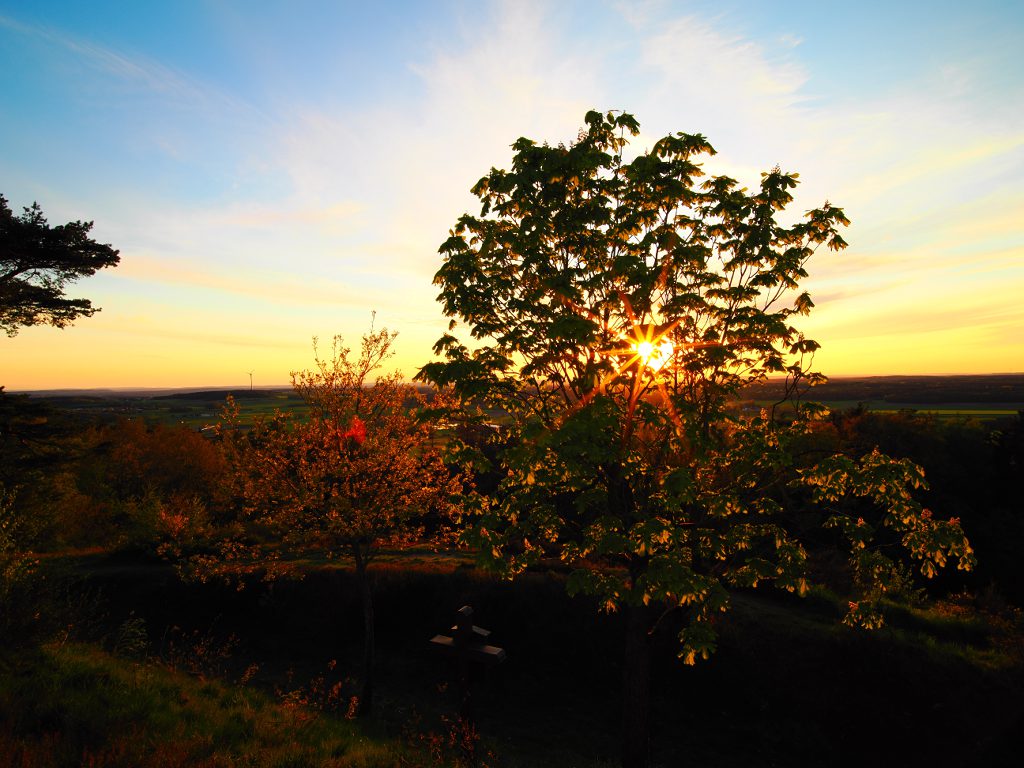
A super nice person from the community provided me with the Laowa 10mm f/2. In its original packaging with everything. I went out at sunset yesterday and took a few photos.
The focusing distance is an impressive 12cm, the focus ring is easy and precise to operate, the camera controls the aperture and the MF assistant kicks in. One small problem: the “focus indicator” of the MF assistant, i.e. the green bar on the display that shows whether you are focussing towards infinity or the close-up range, is not activated. However, once you have overcome the initial bewilderment, this is no longer an issue. Even outdoors with light on the display, you can easily control the focus – with the viewfinder magnifier anyway.

The biggest problem is getting to grips with the tiny depth of field at the closest focusing distance. f/2 is quite a challenge. But as you can see, so is the bokeh. Especially in combination with the close focus distance: it looks good. It also doesn’t have the typical, intrusive CatsEye bokeh of many Chinese lenses.

We’ll deal with the subject of CAs briefly: I wasn’t able to provoke any. On the subject of flares: you can see a little bit at f/2 on the top of the broom – which I personally think is pretty nice, but purists may say that these veil flares don’t work at all. (By the way, I know them from the Lensbaby 2.0, where they are not so fragrant, but also pretty cool). As soon as you are out of the close-up range, the flares are gone. The backlit star has a red blob in the bush on the left. It appears at around f/5.6 and becomes increasingly clear up to f/22. But provoking it is not so easy. From aperture 5.6 there are also aperture stars, which of course become increasingly grandiose up to aperture 22.

The lens has a visible darkening of the edges, but this can be tolerated. Of course, the shadows at sunset have nothing to do with the vignette from the lens. We’ll see exactly how strong this is in the studio tests. In terms of sharpness, I have no criticism at the moment. In “real life”, it’s all very nice.
Oh yes: the aperture. At aperture 22, the aperture becomes unstable. The aperture is less than one millimetre and this is where you reach the limits of the accuracy of the aperture mechanism. It is therefore possible that the exposure fluctuates at aperture 22 – because the aperture does not close so precisely. It’s not much, but you should keep an eye on it.
Oh yes, the thing is tiny again.
Barrel distortion and all that in the next post….
Spannend; mit was Superweitwinkligem von Laowa sympathisiere ich schon länger, aber bis jetzt habe ich mich in Enthaltung geübt. Ich habe allerdings auch im persönlichen Umfeld schon von dezentrierten Exemplaren etwa des 7mm gehört.
Beim 10mm f/2 wäre vielleicht auch ein Vergleich mit dem Panasonic 10-25/1.7 spaßig!
Tja, das 10-25 habe ich nicht hier. Aber das Pana ist definitiv nicht so gut auskorrigiert wie das Laowa, dafür ein Riesentrumm.
Die Laowa 10mm F2 ist eine meiner absoluten Lieblingslinsen. Es ist sogar mein Immerdrauf auf der EM5 III auf Arbeit. Ich hatte zuerst schon seit ein paar Jahren die erste Version des Laowa 7.5mm F2 und mochte diese Linse auch sehr. Die habe ich aber mittlerweile gegen das Laowa 6mm F2 eingetauscht.
Das 6er und 10er machen für mein Empfinden schönere Blendensterne, sind besser bei Gegenlicht und schärfer an den Rändern. Vielleicht ist aber die neuere Version des 7.5er besser ?
Das Laowa 3er Gespann ist für mich Definition von MFT: respektable Abbildung in superkleinem Format.